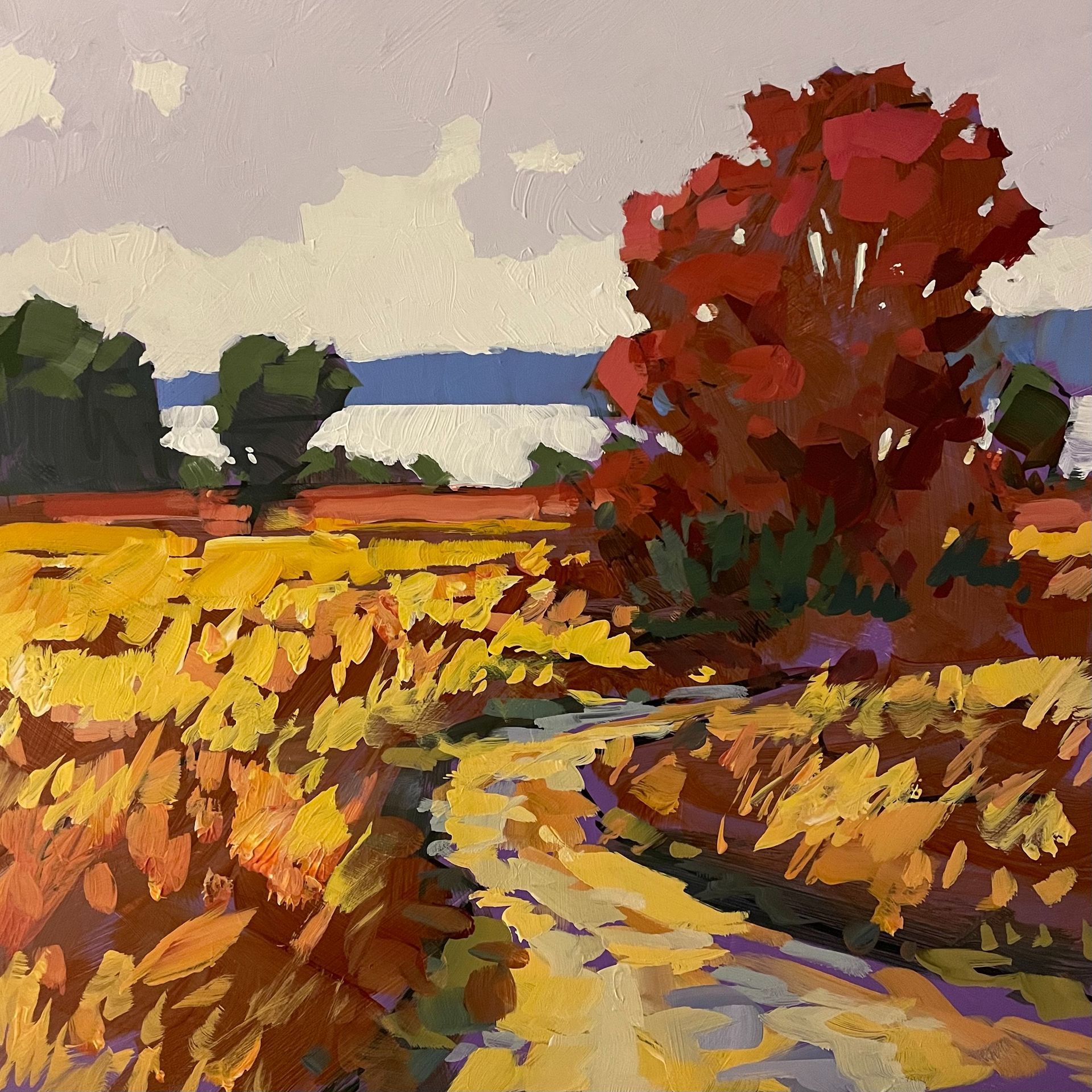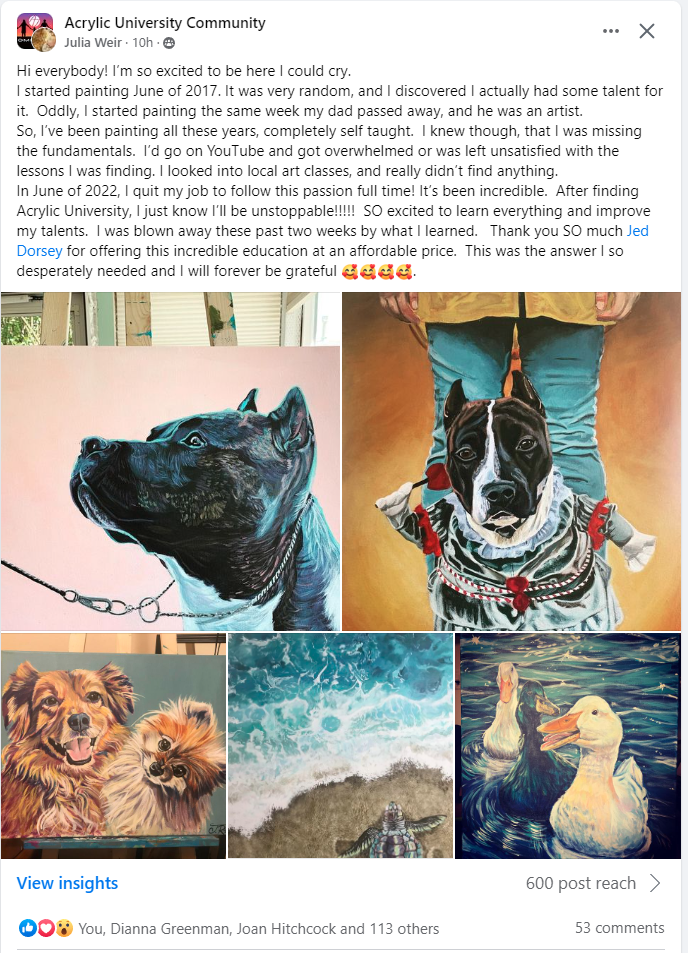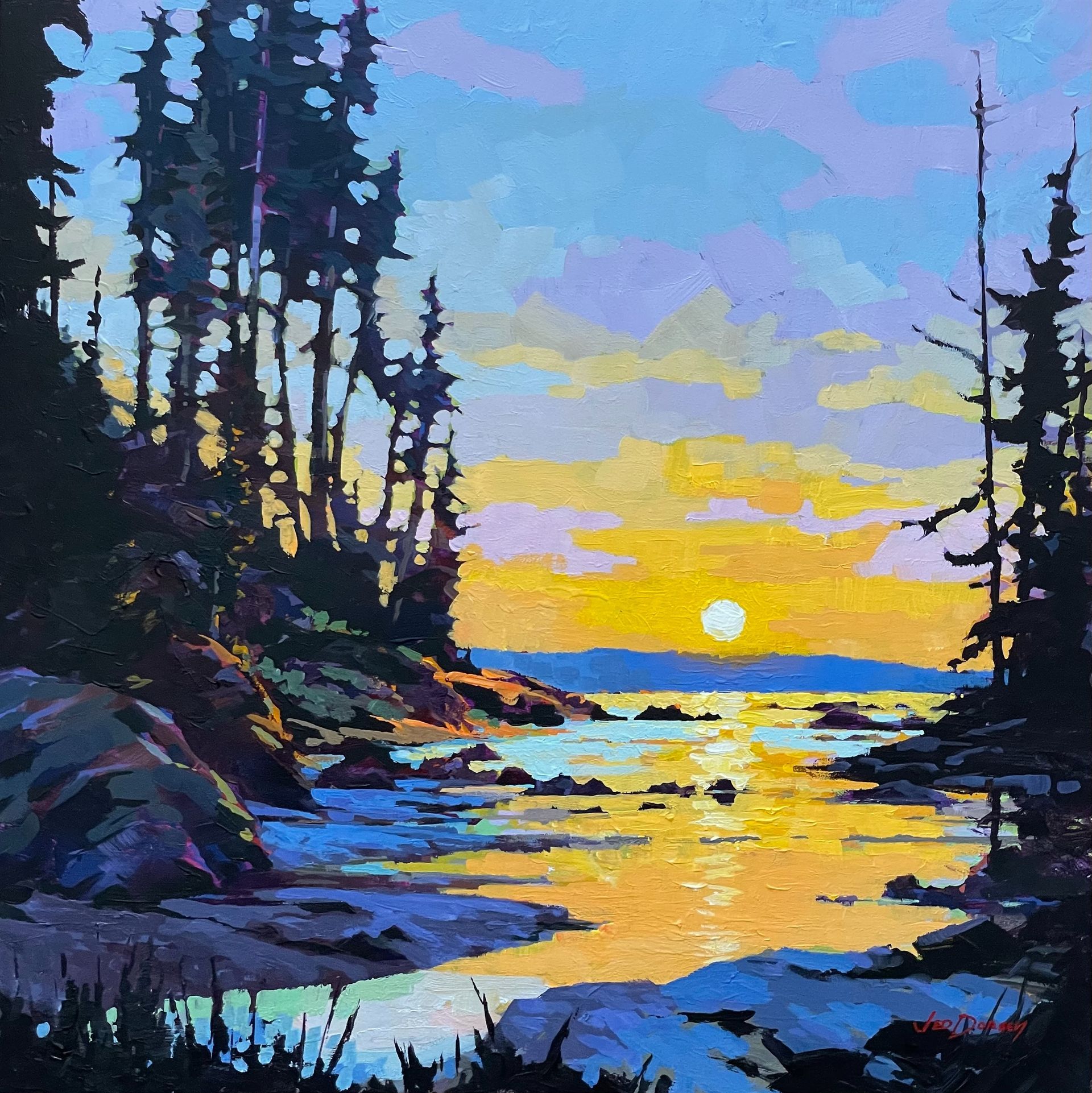What I Learned About Painting Water from Jack Wilkinson Smith
How to paint water? It’s a good question! Water is a very difficult subject to paint. Trying to capture how light interacts with water can be super frustrating. Luckily, we can learn from those who have walked the path before us. Today we’re going to be looking at an ocean painting by Jack Wilkinson Smith.
Long ago, a great artist once said, ‘For an Impressionist to paint from nature is not to paint the subject, but to realize sensations.’ The man who expressed this thought was Paul Cezanne, a French Impressionist painter from the late 20th century. Many years later, American artist Jack Wilkinson Smith would bring these words to life. It was exciting for me to study his work and discover better how to paint water!
I really enjoyed doing this master copy of Jack Wilkinson Smith’s ocean piece. We’ll learn more about his story in a just a bit, but for now, let’s focus on what makes his work unique, and what I tried to capture in my version of this dynamic ocean painting.
What I learned after copying this painting was:
- Jack Wilkinson Smith used very strong values! Just take a look at how the shadows of the foreground rocks contrast with the white portion of the breaking wave. This value contrast immediately captures the viewer’s attention and helps draw us into the scene.
- Jack Wilkinson Smith exceled at expertly expressing the nuances of water in this painting. Water is alive. It is constantly changing, moving, reflecting, and absorbing light. As an artist, Jack had clearly honed his observational skills of nature, and this is shown through his ability to capture water’s subtleties and complexities in this painting of waves crashing up against the rocks. Jack didn’t just paint a water scene with boring and similar blues but he used a wide range of blue and green hues in the painting. To highlight his ocean palette, he chose a complimentary peachy sky color which he subtly reflected in the water.
- Jack Wilkinson Smith makes good use of light in this painting. There is a good value range from the foreground darks to the white used on the breakers. This use of value, contrast, and light helps bring the ocean scene to life. Like Cezanne said, the goal is not to paint the subject but to realize sensations. Viewing this piece, we can easily imagine the crash of the surf and the cry of the gulls being carried along in the air. I’d say that Smith nailed Cezanne’s goal of helping realize sensations through this piece of art, as well as in his many others.
- Jack Wilkinson Smith used a good variety of different brush strokes in this exceptional ocean scene. In the foreground rocks, the strong blocky strokes he used help develop the feeling of the solid craggy rocks, while the mid-ground rocks incorporate softer brush-work to form the sun-lit rocks. Moving into the background of the painting the horizon is softly conveyed and recedes well into the distance with the help of blended brushstrokes, conveying well a sense of atmosphere.
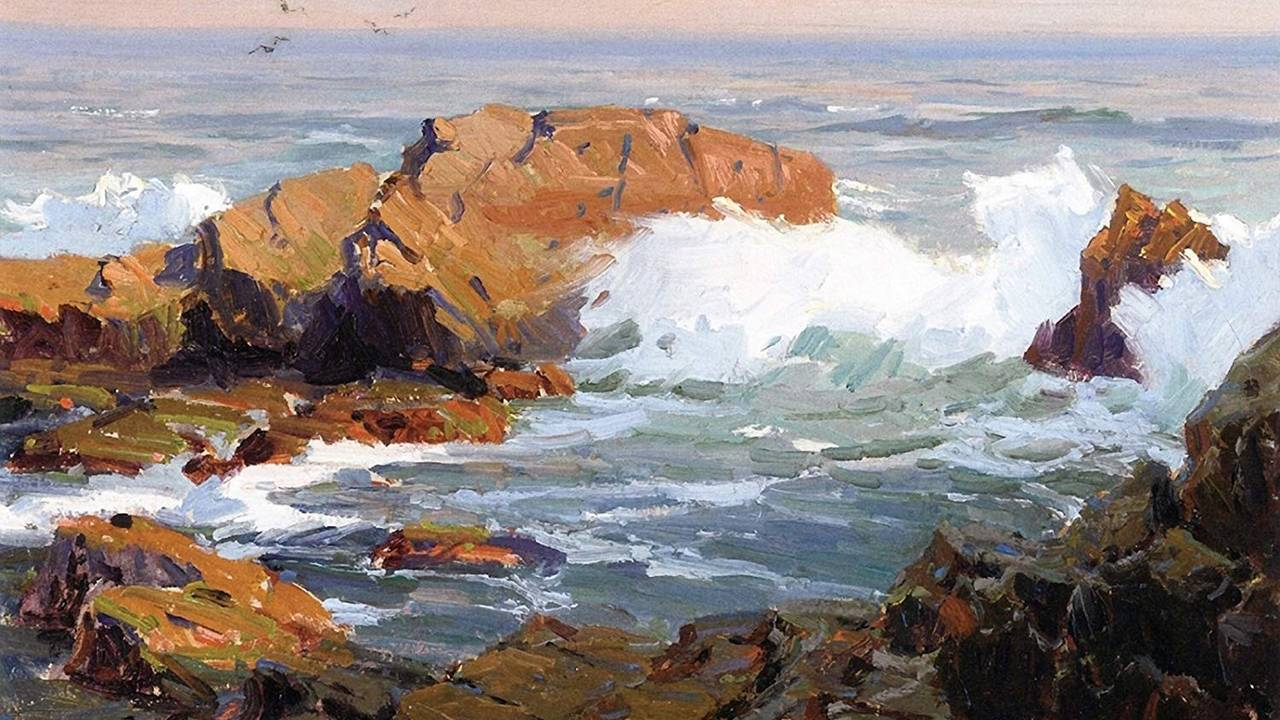
I started my master copy with a limited but vibrant palette and began the painting with a quick sketch of the scene with my acrylic marker. I use this marker to establish the design of the piece before moving onto establishing my darkest values of the scene. This gave the canvas the base needed before toning the canvas with Quinacridone Gold. With its warm transparency, I could still see the acrylic marker lines and, of course, our dark values. After that, I used strong brushstrokes and different values and colors for the rocks. Then I began blocking in the water. I used something called gradation, which is the transition from the dark tones used in the rocks and water closer to us, to the lighter tones used as the scene moves away from us. Finally, I focused on refining the rocks, adjusting the water, and adding the sky. I then applied another layer of white to the frothy water of the wave to make it pop. And last but not least, I painted in a couple of free-flying seagulls!
Through all of this, remember the greatest tool we have as artists is our eyes, but we need to train them to recognize color nuances in order to express them in our painting. When we do this, we can, as Cezanne stated, create that “sensation of feeling” of one standing at that very location; on the craggy rocks, hearing the surf, and smelling the salty breeze, looking across the vast ocean.
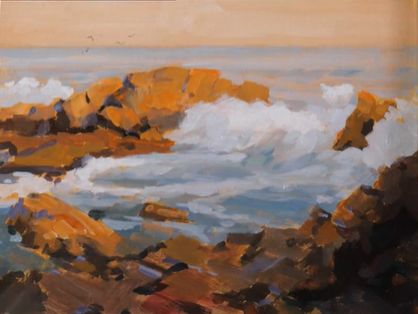
Now, let’s look at a bit of Jack Wilkinson Smith’s story.
Jack Wilkinson Smith knew very well what this beautiful ocean scene we’ve been studying was like in his personal life, having been born near the ocean on February 7, 1873 in Paterson, New Jersey, and later dying in 1949 in Monterey Park, California.
Jack was born into a family that had an interest in art. His father was an artist who painted some of the decorations in the capitol building of Albany, New York. His grandfather owned an 80-acre farm, including the area we now know as Madison Square Garden. While in his teenage years, Jack studied Art at the Chicago Art Institute, as well as under George Gardener Symons in Chicago.
Jack eventually took up work as a commercial artist in Lexington, Kentucky and later went on to become a sketch artist for the Cincinnati Enquirer, studying further in his art education under Frank Duveneck. Jack gained considerable recognition for his sketches of the front-line during the Spanish-American War.
Eventually, Jack moved westward and in 1906 he moved to Alhambra, California and settled in by the beautiful Pacific Ocean. It was here that he would establish a studio-home amongst a eucalyptus grove called “Artists Alley.” His neighbors included fellow artists Eli Harvey, Frank Tenney Johnson, and Norman Rockwell, who was a summer-resident.
After his move to the West Coast, Jack transitioned from his Midwestern watercolor paintings to oil paints. This became his main medium of choice as he focused on his new work. He found amazing subject matter traveling throughout the state and along the incredible Pacific coastline. This subject matter became the inspiration of much of his stunning impressionistic artwork.
Jack would go on to be credited for his significant part in helping to establish the Biltmore Salon. This Salon exhibited and sold paintings by many local artists. He was also instrumental in helping the formation of the “Sketch Club”, along with being an inaugural member of the Laguna Beach Art Association and the California Art Club.
During the Great Depression, Jack applied his talents in working for Pacific Outdoor Advertising.
When he died in Monterey, California in 1949, near the sea he had painted so many times, Jack Wilkinson Smith left behind a rich visual legacy for future generations to bask in and enjoy. He left behind a treasury of art, capable of instructing and teaching artists for years to come. And most importantly, he showed us all how to see. In seeing, he gave to others that allusive gift Cezanne once talked about, a sensation or feeling, that moves mankind.
My take away from studying Jack Wilkinson Smith:
- Study the subtleties of water and moving water whenever you have the chance!
- Remember, whether we are painting on location or from a photograph, we want to create an aesthetically pleasing scene-not just duplication-with all the movement and light we can get!
- Reflections are normally darker that the object reflected.
- Water absorbs light. Have fun making your paintings more interesting by expanding sky colors and the corresponding water reflections!
- Water is reflective and translucent at the same time, this makes the values of the water lighter than in other areas.
- Take the the time to really observe!
- Study your reference well-whether it’s a photograph, a plein air scene, or a master copy, such as the one we’re looking at today.
- And, let’s just keep going! For all of us, painting is a continual journey, and I can’t wait for you to come along with me as we grow together!
